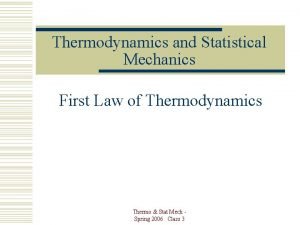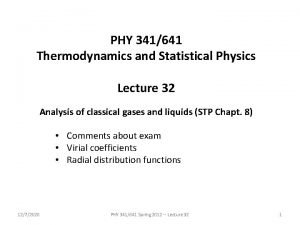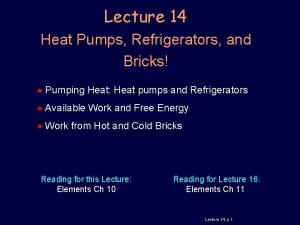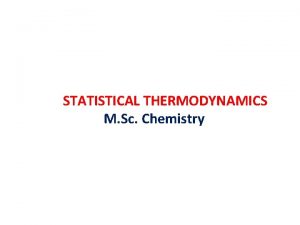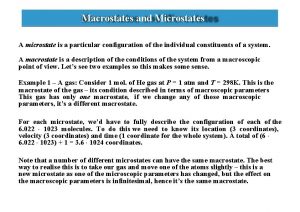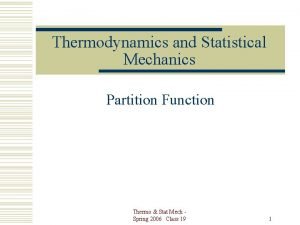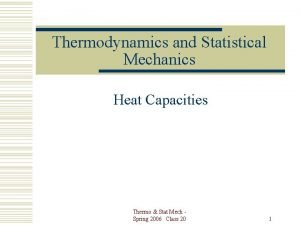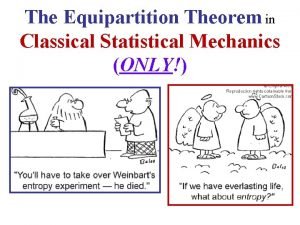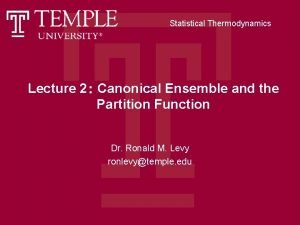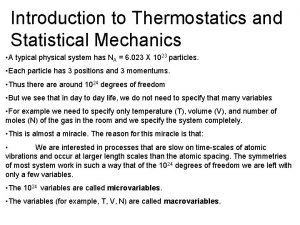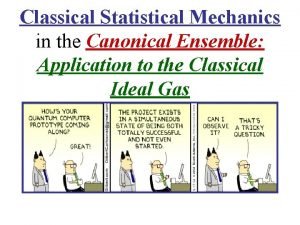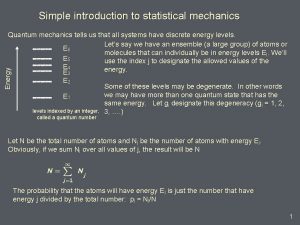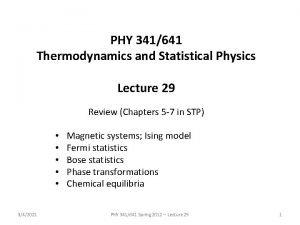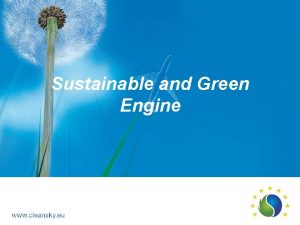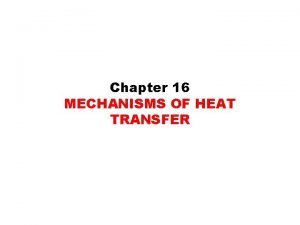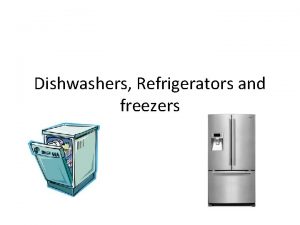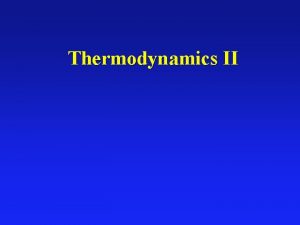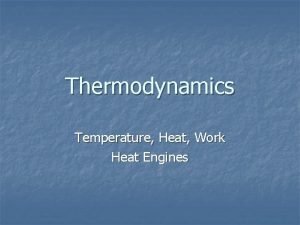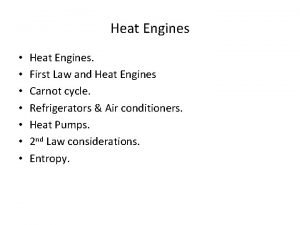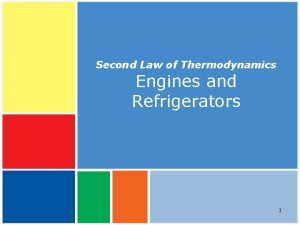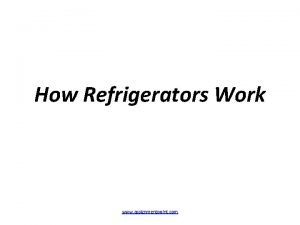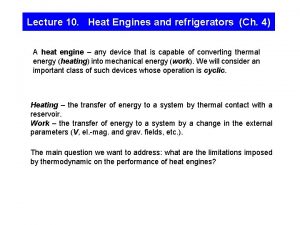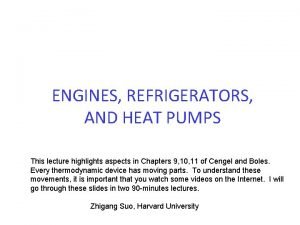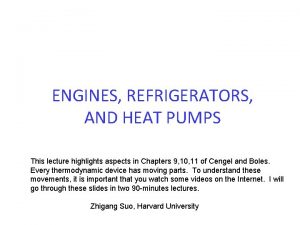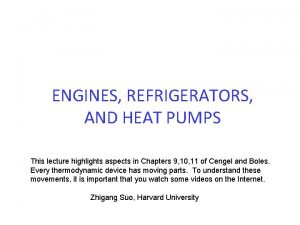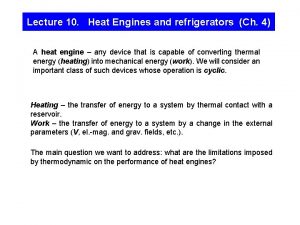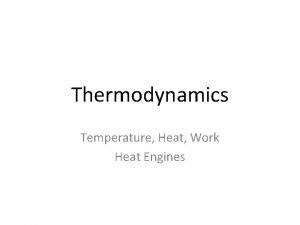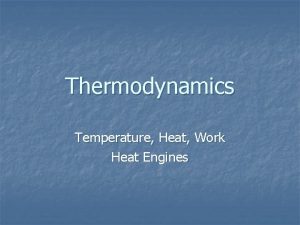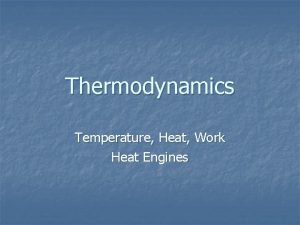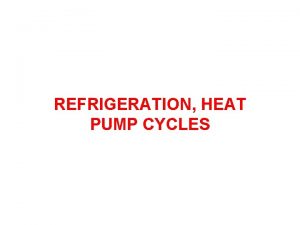Thermodynamics and Statistical Mechanics Heat Engines and Refrigerators




















- Slides: 20

Thermodynamics and Statistical Mechanics Heat Engines and Refrigerators Thermo & Stat Mech Spring 2006 Class 5 1

Carnot Cycle A Carnot cycle is an idealized reversible cycle that operates between two heat reservoirs at temperatures T 1 and T 2, where T 2 > T 1. It can operate as a heat engine, or a refrigerator. Thermo & Stat Mech - Spring 2006 Class 5 2

Carnot Cycle Thermo & Stat Mech - Spring 2006 Class 5 3

Carnot Cycle (Heat Engine) Thermo & Stat Mech - Spring 2006 Class 5 4

Carnot Cycle Thermo & Stat Mech - Spring 2006 Class 5 5

Carnot Cycle For the entire cycle, Q = W + DU, and DU = 0. The total heat equals the total work, Q = W. |W| = |Q 2| – |Q 1| Conservation of energy. |Q 2| = |Q 1| + |W| Thermo & Stat Mech - Spring 2006 Class 5 6

Carnot Cycle For an isothermal process: For an adiabatic process: Thermo & Stat Mech - Spring 2006 Class 5 7

Path a®b Thermo & Stat Mech - Spring 2006 Class 5 8

Paths b®c, c®d, and d®a Thermo & Stat Mech - Spring 2006 Class 5 9

Carnot Cycle Divide a®b by c®d and then b®c by d®a, and Thermo & Stat Mech - Spring 2006 Class 5 10

Thermal Efficiency (h) If T 1 = 0, h = 1 (100%) Thermo & Stat Mech - Spring 2006 Class 5 11

Refrigerator (Heat Pump) Run the cycle in reverse. Do work |W| on the system, remove |Q 1| from the low temperature reservoir, and put |Q 2| into the high temperature reservoir. As in a heat engine, |Q 2| = |Q 1| + |W|. Thermo & Stat Mech - Spring 2006 Class 5 12

Coefficient of Performance (for Refrigerator) Thermo & Stat Mech - Spring 2006 Class 5 13

Coefficient of Performance (for Heat Pump) Thermo & Stat Mech - Spring 2006 Class 5 14

Otto Cycle (Gasoline Engine) Thermo & Stat Mech - Spring 2006 Class 5 15

Otto Cycle W = |Q 2| – |Q 1| |Q 2| = CV(Tc – Tb) |Q 1| = CV(Td – Ta) Thermo & Stat Mech - Spring 2006 Class 5 16

Otto Cycle Thermo & Stat Mech - Spring 2006 Class 5 17

Otto Cycle and Subtract, and get, Then, Thermo & Stat Mech - Spring 2006 Class 5 18

Otto Cycle is called the compression ratio. Thermo & Stat Mech - Spring 2006 Class 5 19

Diesel Cycle Thermo & Stat Mech - Spring 2006 Class 5 20
 Dulong petit law
Dulong petit law Thermodynamics and statistical mechanics
Thermodynamics and statistical mechanics Brick refrigerators
Brick refrigerators Statistical thermodynamics is a study of
Statistical thermodynamics is a study of Statistical thermodynamics
Statistical thermodynamics Microstate and macrostate examples
Microstate and macrostate examples Stat
Stat Statistical mechanics
Statistical mechanics Classical equipartition
Classical equipartition What is microcanonical ensemble
What is microcanonical ensemble Partition function in statistical mechanics
Partition function in statistical mechanics Partition function in statistical mechanics
Partition function in statistical mechanics Introduction to quantum statistical mechanics
Introduction to quantum statistical mechanics Statistical mechanics of deep learning
Statistical mechanics of deep learning Statistical mechanics
Statistical mechanics Chapter 5 two-cycle and four-cycle engines answers
Chapter 5 two-cycle and four-cycle engines answers Sustainable and green engines
Sustainable and green engines Library book drawing
Library book drawing Link analysis
Link analysis Engines link analysis and
Engines link analysis and Mechanism of heat transfer
Mechanism of heat transfer
